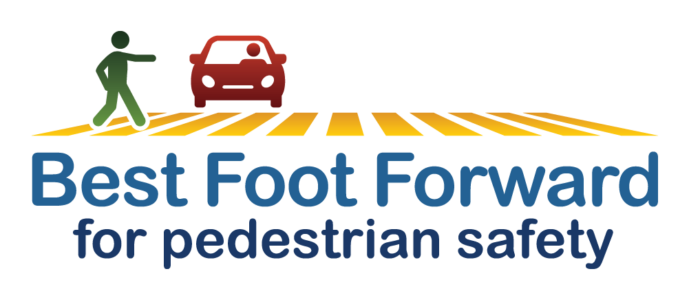ORLANDO, FL – As students throughout Central Florida prepare for a return to the classroom,…

Q & A with Billy Hattaway, Orlando’s new transportation director
Billy Hattaway has been a bicycling and walking advocate for years, most recently leading an initiative for the Florida Department of Transportation to make state-owned roads more accommodating for cyclists and pedestrians. Hattaway, who spent a total of 28 years with FDOT during three separate stints, has accepted a position as the transportation director for the City of Orlando, starting November 28, 2016.
Bike/Walk Central Florida: Biking is a real passion for you, correct?
I was a runner until 2009, and I decided because so many of my runner friends were having knee replacements I should try another form of exercise. So I picked up bicycling.
Now, I lead a 40-mile group ride every Saturday. Unlike some other group rides, the one I lead is focused on safety and creating good will with motorists. I’ve been doing that for six years now. I also bike commuted when I worked in downtown Orlando. I’m looking forward to biking again when I go to work for the city, except when I have to wear a suit or in the heat of summer.
What were some of the practices you installed around the state for the bike and pedestrian safety program?
We hired dedicated Bike/Pedestrian Coordinators in the districts to deal with the planning and design side of accommodating cyclists and pedestrians better. We also set up Bike/Pedestrian Safety Specialists to deal with existing safety problems. We were initially focused on the top 10 counties with the worst crash problems. We now have included our top 20 counties in the focused initiative. We’ve discovered a lot of things that we need to fix. For example, we found that the lighting we have out there on the system is inadequate.
Is it too dim?
Yes. Most of the lighting on our roadways is the high-pressure sodium that has an orange hue. After roughly six years, even though a light may still be lit, the light actually reaching the ground is only about 10 percent what it was when originally installed. During our program planning workshop in May, we took $100 million off the top of our budget and applied it specifically to replacing the lighting on our worst intersections with LED. We also changed our design to improve the lighting at the intersections. Hopefully, that will improve the lighting at 80 percent of the roughly 2,500 intersections in the state, making them safer for everyone.
What are your priorities for the City of Orlando?
It’s going to be helping the mayor in achieving his vision for the city, which includes providing choices in transportation for people. We have to take care of people’s needs throughout the region. There are different contexts, like the urban context in downtown Orlando, and the suburban context in the communities of Lake Nona or MetroWest. They have different challenges.
Bottom line, you want to make city roads more accommodating for bikers and walkers?
Yes. The fact is when we improve safety for them, we improve safety for everybody.
What kind of improvements are you considering?
I’m going to reach out to the state to find out where our highest crash corridors are. Then I am going to meet with the city staff to find out what kind of plans are in place to improve those corridors. With pedestrian crashes, they tend to be somewhat random on the one hand, but they also tend to be congregated in the same corridors. We need to work on improvements to those corridors. We’ve got to work on education and enforcement as well. A lot of people just don’t know the laws. There’s a lot of education that needs to be done.
Is it safe to say we will be seeing wider sidewalks, more bike lanes and paths and better lighting in Orlando?
It won’t strictly be just because of me. A lot of it is being driven by the DOT now. But I would say “yes” because a lot of what the state is doing will be spilling over, not just in Orlando, but across the state. On the state system, we’ll have everything from shared lanes, to our new standard, buffered 7-foot bike lanes, side paths and maybe cycle tracks.
Will we see cycle tracks in Orlando, like in Winter Park by Showalter Park?
It’s a possibility.
Sum up your transportation philosophy.
We should always be looking at trends nationally and regionally. And it’s clear that people want more choice in places where they live and how they get around. I think people accept the idea that they’re going to have to drive to work, but when they get home they want to be able to walk and ride to shops and restaurants and other things. Certainly, the mayor’s vision is to attract high-paying jobs and those types of people. We need to find ways to accommodate that.
European cities really encourage biking and walking. Will we ever get to that place?
We will in some instances. But we all have to recognize when you have communities built over hundreds of years — and most Sun Belt cities were not — in those places, every community was built around walking. In those cities, you have small block sizes and a mix of uses everywhere. All the Sun Belt cities are struggling because we separated all the land uses and stopped creating local networks. Undoing that is a heavy lift. But it is possible, and I think the city of Orlando has enormous potential.





This Post Has 0 Comments